Mobile Device
SM-A7050
CONTENTS
1. Safety Precautions
2. Specification
3. Product Function
4. Exploded View and Parts list
5. MAIN Electrical Parts List
6. Level 1 Repair
7. Level 2 Repair
8. Level 3 Repair
9. Reference Abbreviation
4.
2 Notice: All functionality, features, specifications,
and other product information provided in this
document, including but not limited to, benefits,
design, pricing, components, performance,
availability, and capabiliti-es of the product are
subject to change without notice. Samsung
reserves the right to alter this doc-ument or the
product described herein at anytime, without
obligation to provide notification of such
changes.
�
1. Safety Precautions
1-1. Repair Precaution
Before attempting any repair or detailed tuning, shield the device from RF noise or static
electricity discharges.
Use only demagnetized tools that are specifically designed for small electronic repairs,
as most electronic parts are sensitive to electromagnetic forces.
Use only high quality screwdrivers when servicing products. Low quality screwdrivers can
easily damage the heads of screws.
Use only conductor wire of the properly gauge and insulation for low resistance, because of the low margin
of error of most testing equipment.
We recommend 22-gauge twisted copper wire.
Hand-soldering is not recommended, because printed circuit boards (PCBs) can be easily
damaged, even with relatively low heat. Never use a soldering iron with a power rating of
more than 100 watts and use only lead-free solder with a melting point below 250°C (482°F).
Prior to disassembling the battery charger for repair, ensure that the AC power is disconnected.
Always use the replacement parts that are registered in the SEC system. Third-party replacement parts
may not function properly.
�
1. Safety Precautions
1-2. ESD(Electrostatically Sensitive Devices) Precaution
Many semiconductors and ESDs in electronic devices are particularly sensitive to static discharge and can
be easily damaged by it. We recommend protecting these components with conductive anti-static bags
when you store or transport them.
Always use an anti-static strap or wristband and remove electrostatic buildup or dissipate
static electricity from your body before repairing ESDs.
Ensure that soldering irons have AC adapter with ground wires and that the ground wires are properly
connected.
Use only desoldering tools with plastic tips to prevent static discharge.
Properly shield the work environment from accidental electrostatic discharge before opening
packages containing ESDs.
The potential for static electricity discharge may be increased in low humidity environments,
such as air-conditioned rooms. Increase the airflow to the working area to decrease the
chance of accidental static electricity discharges.
�
2. Specification
2-1. GSM General Specification
Item
GSM 850
EGSM 900
DCS1800
PCS1900
Freq. Band[MHz]
Uplink/Downlink
824~849
869~894
880~915
925~960
1710~1785
1805~1880
1850~1910
1930~1990
ARFCN range
128~251
0~124 & 975~1023
512~885
512~810
Tx/Rx spacing
45MHz
45MHz
95MHz
80MHz
Mod. Bit rate/
270.833kbps
270.833kbps
270.833kbps
270.833kbps
Bit Period
3.692us
3.692us
3.692us
3.692us
Time Slot Period/
576.9us
Frame Period
Modulation
GSM/
EGPRS
4.615ms
GMSK/
8PSK
576.9us
4.615ms
GMSK/
8PSK
576.9us
4.615ms
GMSK/
8PSK
576.9us
4.615ms
GMSK/
8PSK
MS Power
33dBm~5dBm
33dBm~5dBm
30dBm~0dBm
30dBm~0dBm
Power Class
4(GMSK)
E2(8PSK)
4(GMSK)
E2(8PSK)
1(GMSK)
E2(8PSK)
1(GMSK)
E2(8PSK)
Sensitivity
-102dBm
-102dBm
-100dBm
-100dBm
TDMA Mux
8
8
8
8
�
2. Specification
2-2. GSM Tx Power Class
TX Power
control level
GSM850
TX Power
control level
EGSM900
TX Power
control level
DCS1800
TX Power
control level
PCS1900
5
6
7
8
9
10
11
12
13
14
15
16
17
18
19
-
33±2 dBm
31±2 dBm
29±2 dBm
27±2 dBm
25±2 dBm
23±2 dBm
21±2 dBm
19±2 dBm
17±2 dBm
15±2 dBm
13±2 dBm
11±3 dBm
9±3 dBm
7±3 dBm
5±3 dBm
-
5
6
7
8
9
10
11
12
13
14
15
16
17
18
19
-
33±2 dBm
31±2 dBm
29±2 dBm
27±2 dBm
25±2 dBm
23±2 dBm
21±2 dBm
19±2 dBm
17±2 dBm
15±2 dBm
13±2 dBm
11±3 dBm
9±3 dBm
7±3 dBm
5±3 dBm
-
0
1
2
3
4
5
6
7
8
9
10
11
12
13
14
15
30±3 dBm
28±3 dBm
26±3 dBm
24±3 dBm
22±3 dBm
20±3 dBm
18±3 dBm
16±3 dBm
14±3 dBm
12±4 dBm
10±4 dBm
8±4 dBm
6±4 dBm
4±4 dBm
2±5 dBm
0±5 dBm
0
1
2
3
4
5
6
7
8
9
10
11
12
13
14
15
30±3 dBm
28±3 dBm
26±3 dBm
24±3 dBm
22±3 dBm
20±3 dBm
18±3 dBm
16±3 dBm
14±3 dBm
12±4 dBm
10±4 dBm
8±4 dBm
6±4 dBm
4±4 dBm
2±5 dBm
0±5 dBm
�
2. Specification
2-3. WCDMA General Specification
Item
WCDMA2100(B1)
WCDMA1900(B2)
WCDMA850(B5)
WCDMA900(B8)
Freq. Band[MHz]
Uplink/Downlink
1920~1980
2110~2170
1850~1910
1930~1990
824~849
869~894
880~915
925~960
ARFCN range
UL:9612~9888
UL:9262~9538
UL:4132~4233
UL:2712~2868
DL:10562~10838
DL:9662~9938
DL:4357~4458
DL:2937~3088
Tx/Rx spacing
190MHz
80MHz
45MHz
45MHz
Mod. Bit rate/
Bit Period
Time Slot Period/
Frame Period
Modulation
MS Power
(dBm)
42.2Mbps(DL)
5.42Mbps(UL)
42.2Mbps(DL)
5.42Mbps(UL)
42.2Mbps(DL)
5.42Mbps(UL)
42.2Mbps(DL)
5.42Mbps(UL)
W C D M A
10ms/0.667ms
H S P A
2ms/0.667ms
Q P S K
1 6 Q A M
6 4 Q A M
W C D M A
10ms/0.667ms
H S P A
2ms/0.667ms
Q P S K
1 6 Q A M
6 4 Q A M
W C D M A
10ms/0.667ms
H S P A
2ms/0.667ms
Q P S K
1 6 Q A M
6 4 Q A M
W C D M A
10ms/0.667ms
H S P A
2ms/0.667ms
Q P S K
1 6 Q A M
6 4 Q A M
25.7 ~ -49(↓)
25.7 ~ -49(↓)
25.7 ~ -49(↓)
25.7 ~ -49(↓)
Power Class
3(max+24dBm)
3(max+24dBm)
3(max+24dBm)
3(max+24dBm)
Sensitivity
-106dBm
-104dBm
-104dBm
-103dBm
�
2. Specification
2-4. LTE General Specification
Item
LTE Band1
LTE Band3
LTE Band5
LTE Band7
LTE Band8
LTE Band28
[SM-A7050_SEA]
Freq. Band[MHz]
1920~1980
1710~1785
824~849
2500~2570
880~915
703~748
Uplink/Downlink
2110~2170
1805~1880
869~894
2620~2690
925~960
758~803
ARFCN range
Tx/Rx spacing
(MHz)
Channel
Bandwidth (MHz)
Modulation
UL:18000~18599
UL:19200~19949
UL:20400~20649
UL:20750~21449
UL:21450-21799
UL:27210~27659
DL:0~599
DL:1200~1949
DL:2400~2649
DL:2750~3449
DL:3450-3799
DL:9210~9659
190
95
45
120
45
55
5/10/15/20
1.4/3/5/10/15/20
1.4/3/5/10
5/10/15/20
1.4/3/5/10
3/5/10/15/20
QPSK,16/64QAM
QPSK,16/64QAM
QPSK,16/64QAM
QPSK,16/64QAM
QPSK,16/64QAM
QPSK,16/64QAM
256QAM(DL only)
256QAM(DL only)
256QAM(DL only)
256QAM(DL only)
256QAM(DL only)
256QAM(DL only)
MS Power (dBm)
25.7~-39(↓)
25.7~-39(↓)
25.7~-39(↓)
25.7~-39(↓)
25.7~-39(↓)
25.7~-39(↓)
Sensitivity(QPSK,
BW 10MHz)
-96.3
-93.3
-94.3
-94.3
-93.3
-94.8
(dBm)
Item
Freq. Band[MHz]
Uplink/Downlink
LTE Band34
LTE Band38
LTE Band39
LTE Band40
LTE Band41
2010 ~ 2025
2570~2620
1 8 8 0 ~ 1 9 2 0
2300~2400
2 5 5 5 ~ 2 6 5 5
ARFCN range
UL/DL:
3 6 2 0 0 ~ 3 6 3 4 9
UL/DL
:37750 ~ 38249
UL/DL:
3 8 2 5 0 ~ 3 8 6 4 9
UL/DL:
38650 ~ 39649
UL/DL:
4 0 2 4 0 ~ 4 1 1 4 0
Tx/Rx spacing (MHz)
0
0
0
0
0
Channel Bandwidth
(MHz)
Modulation
5/10/15/20
5/10/15/20
5/10/15/20
5/10/15/20
5/10/15/20
QPSK,16/64QAM
QPSK,16/64QAM
QPSK,16/64QAM
QPSK,16/64QAM
QPSK,16/64QAM
256QAM(DL only)
256QAM(DL only)
256QAM(DL only)
256QAM(DL only)
256QAM(DL only)
MS Power (dBm)
25.7~-39(↓)
25.7~-39(↓)
25.7~-39(↓)
25.7~-39(↓)
25.7~-39(↓)
Sensitivity(QPSK,
BW 10MHz) (dBm)
-96.3
-96.3
-96.3
-96.3
-96.3
�
2. Specification
2-5. TDSCDMA General Specification
Item
TDSCDMA2010(B34)
TDSCDMA1880(B39)
Chip rate
1.28 Mcps
1.28 Mcps
OBW
1.6 MHz
1.6 MHz
Freq. Band[MHz]
Uplink/Downlink
2010~2025
1880~1920
ARFCN range
10054~10121
9404~9596
Tx/Rx spacing
(MHz)
MS Power
(dBm)
-
-
24 ~ -48(↓)
24 ~ -48(↓)
Power Class
2(max+24dBm)
2(max+24dBm)
Sensitivity
(dBm /1.28 MHz)
-110
-110
�
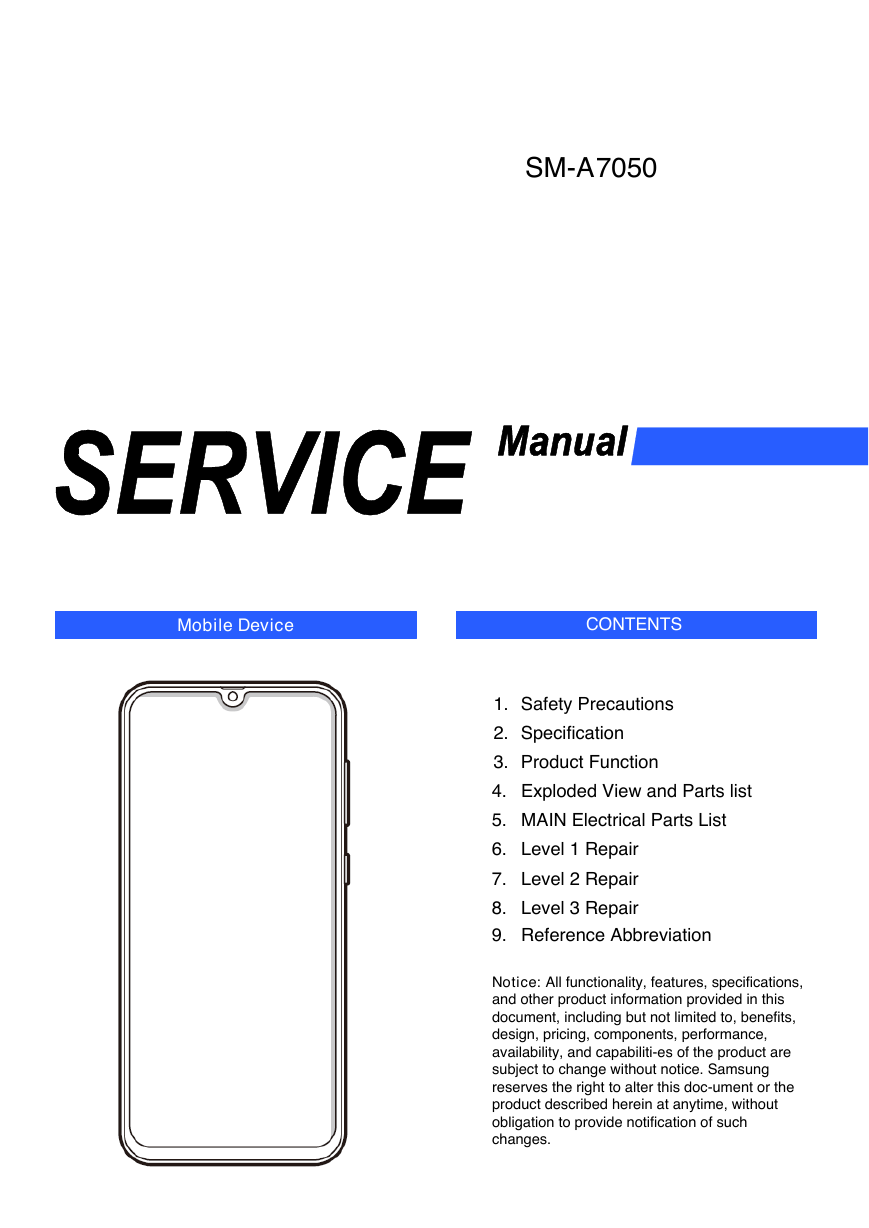
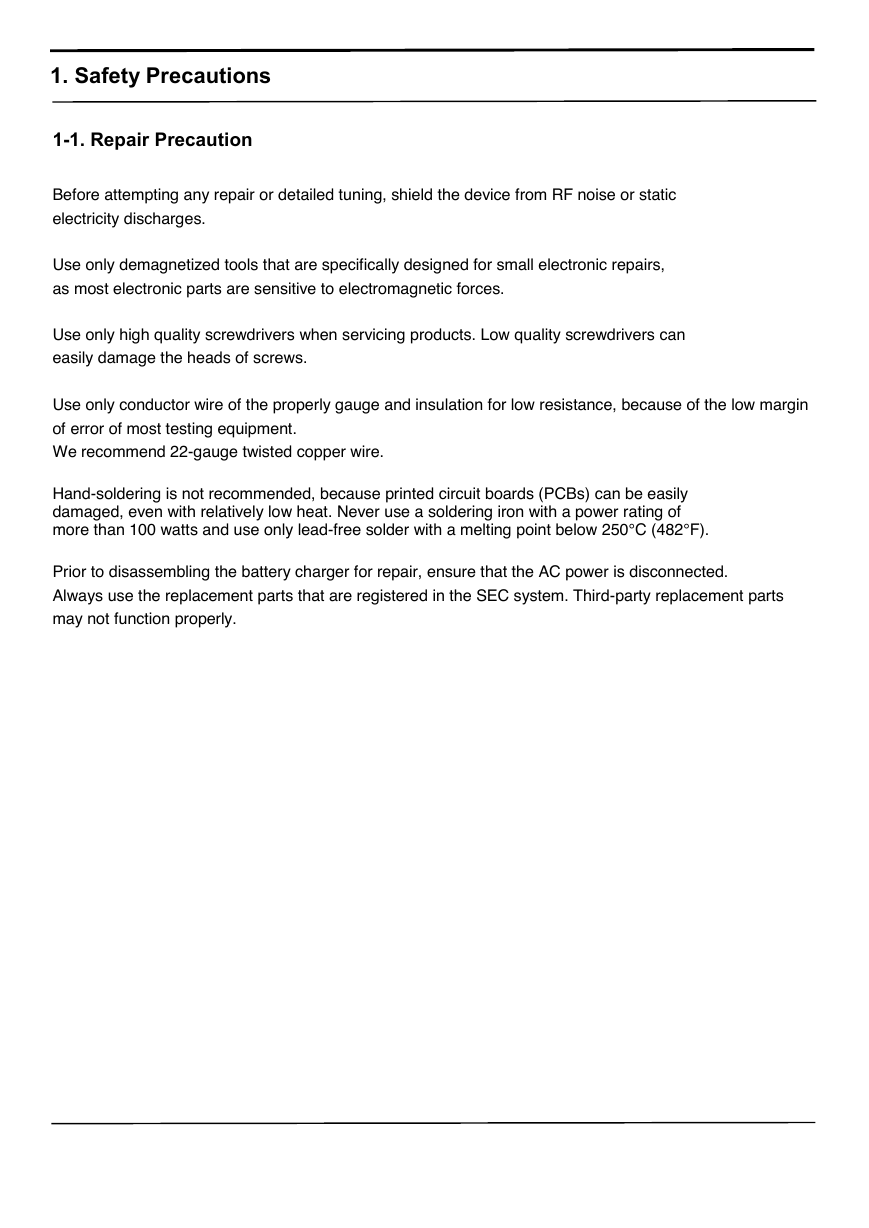
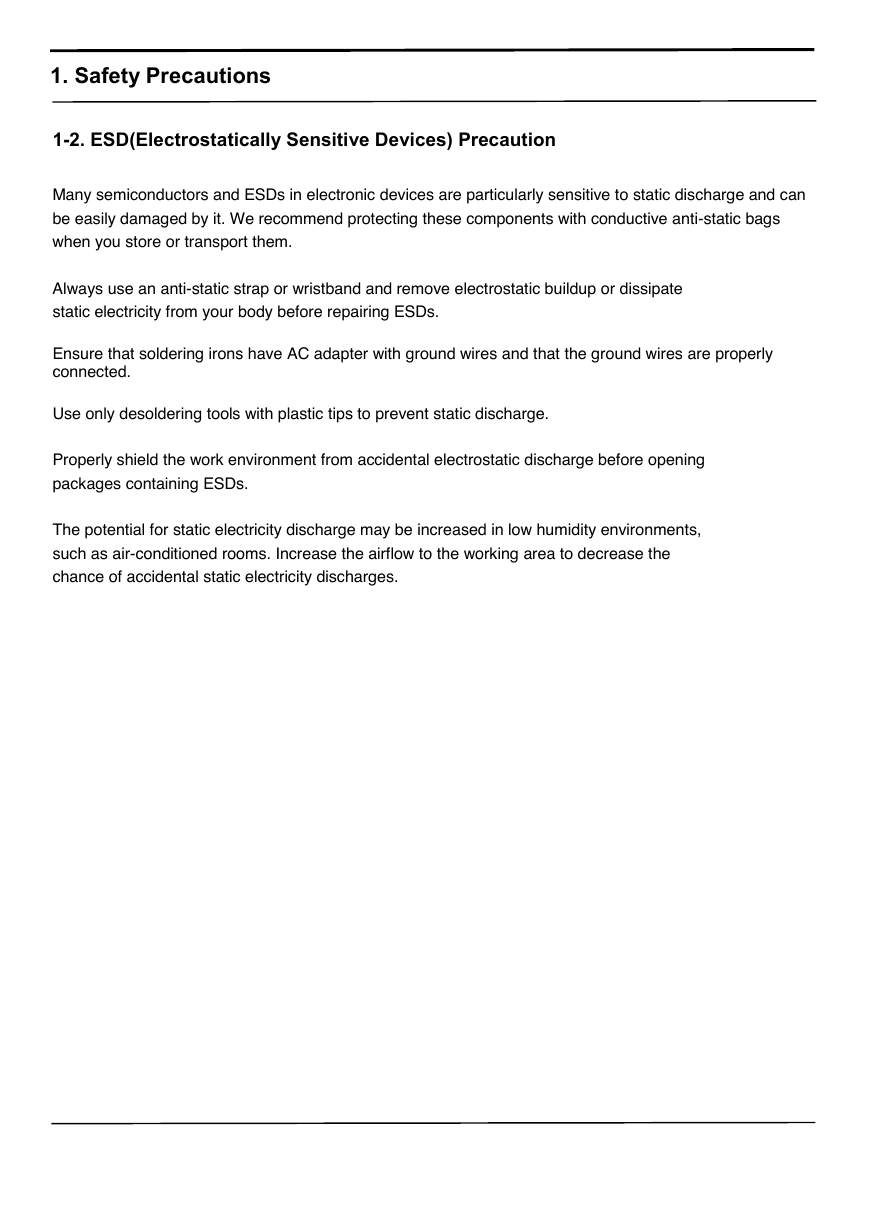
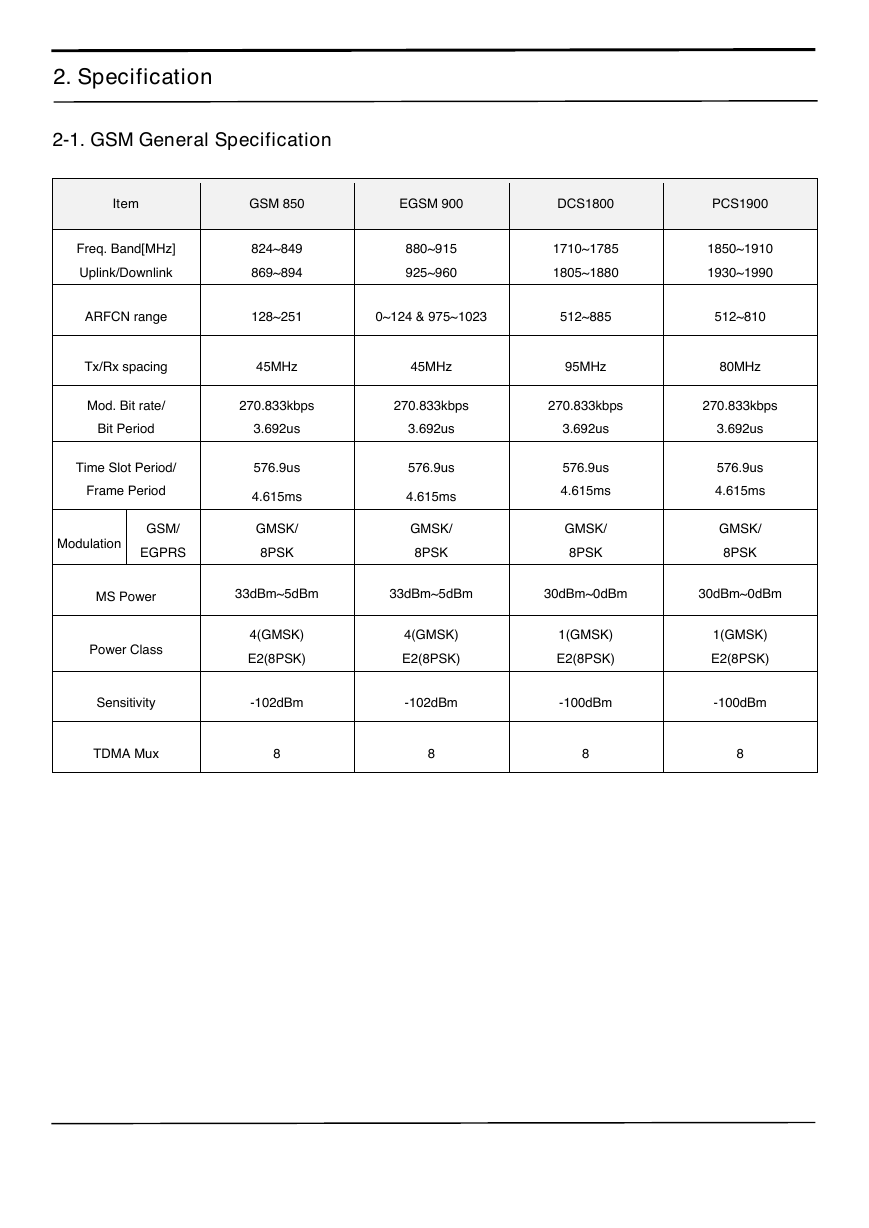

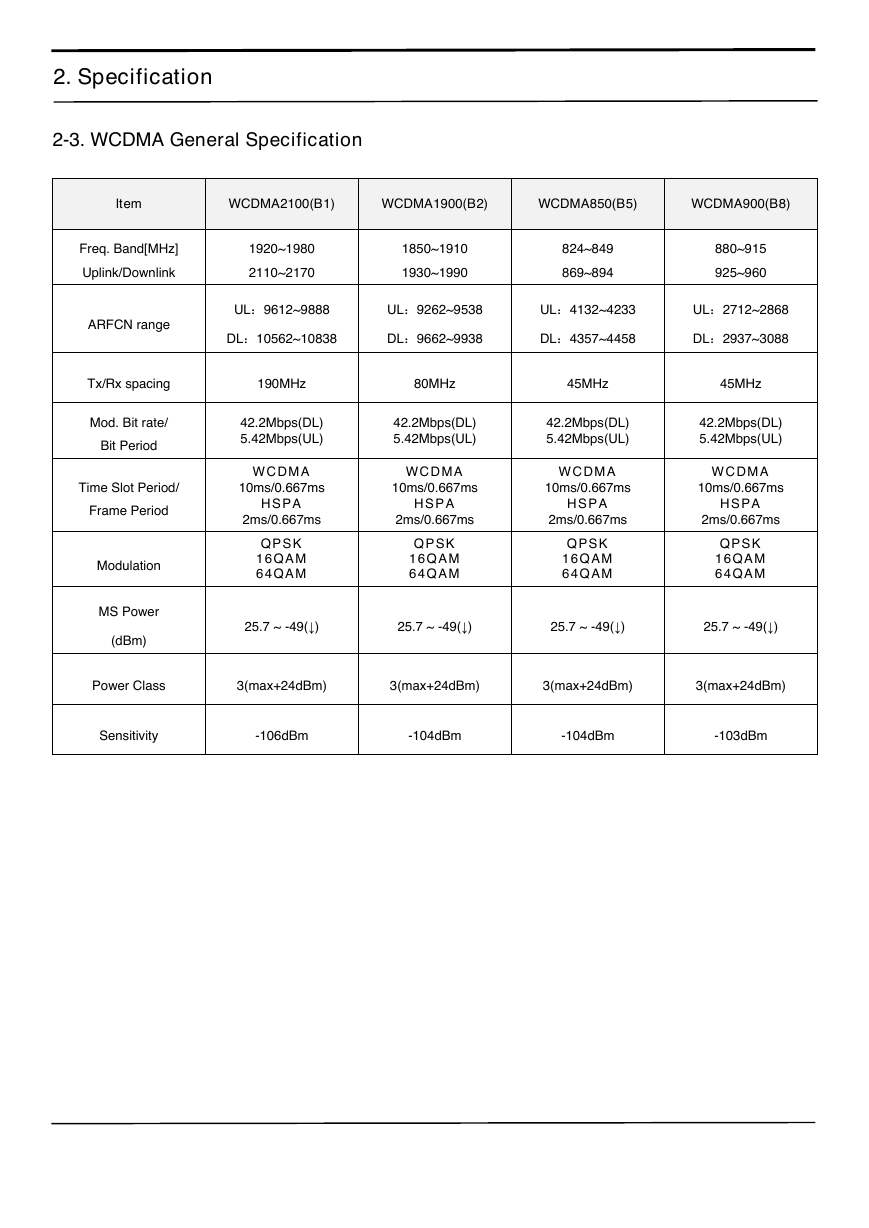
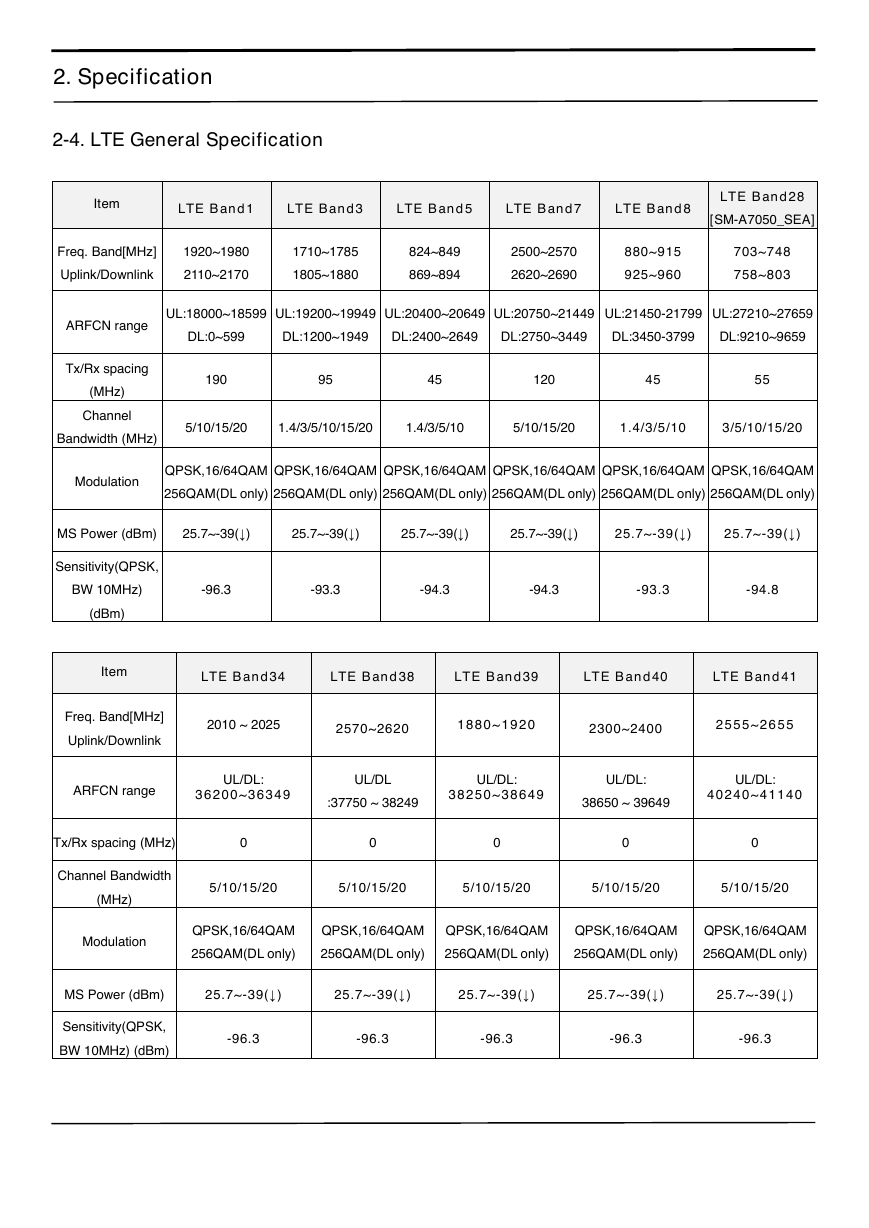
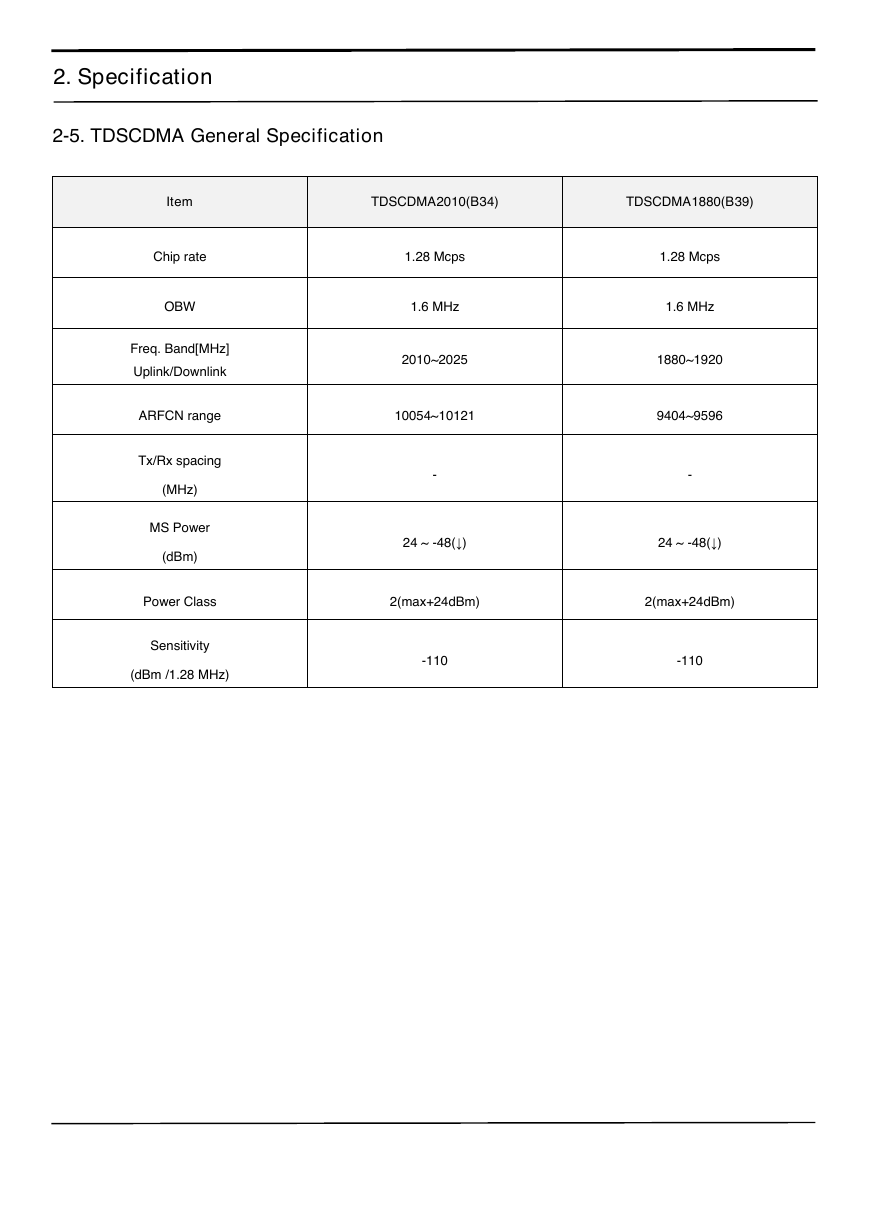








 2023年江西萍乡中考道德与法治真题及答案.doc
2023年江西萍乡中考道德与法治真题及答案.doc 2012年重庆南川中考生物真题及答案.doc
2012年重庆南川中考生物真题及答案.doc 2013年江西师范大学地理学综合及文艺理论基础考研真题.doc
2013年江西师范大学地理学综合及文艺理论基础考研真题.doc 2020年四川甘孜小升初语文真题及答案I卷.doc
2020年四川甘孜小升初语文真题及答案I卷.doc 2020年注册岩土工程师专业基础考试真题及答案.doc
2020年注册岩土工程师专业基础考试真题及答案.doc 2023-2024学年福建省厦门市九年级上学期数学月考试题及答案.doc
2023-2024学年福建省厦门市九年级上学期数学月考试题及答案.doc 2021-2022学年辽宁省沈阳市大东区九年级上学期语文期末试题及答案.doc
2021-2022学年辽宁省沈阳市大东区九年级上学期语文期末试题及答案.doc 2022-2023学年北京东城区初三第一学期物理期末试卷及答案.doc
2022-2023学年北京东城区初三第一学期物理期末试卷及答案.doc 2018上半年江西教师资格初中地理学科知识与教学能力真题及答案.doc
2018上半年江西教师资格初中地理学科知识与教学能力真题及答案.doc 2012年河北国家公务员申论考试真题及答案-省级.doc
2012年河北国家公务员申论考试真题及答案-省级.doc 2020-2021学年江苏省扬州市江都区邵樊片九年级上学期数学第一次质量检测试题及答案.doc
2020-2021学年江苏省扬州市江都区邵樊片九年级上学期数学第一次质量检测试题及答案.doc 2022下半年黑龙江教师资格证中学综合素质真题及答案.doc
2022下半年黑龙江教师资格证中学综合素质真题及答案.doc